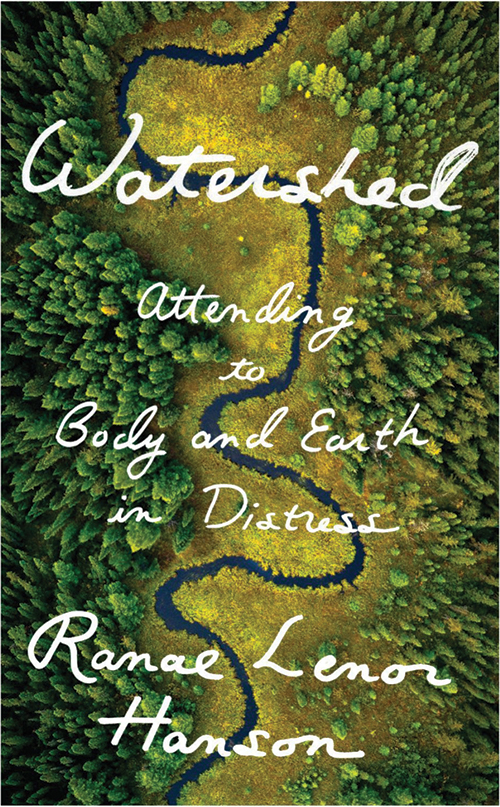
Watershed: Attending to Body and Earth in Distress
Reviewed by Ruah Swennerfelt
February 1, 2022
By Ranae Lenor Hanson. University of Minnesota Press, 2021. 200 pages. $19.95/paperback or eBook.
Traveling on the water taught me that, in a canoe, the best way to face a storm is head-on. Try to run from it and you won’t know what’s coming when the big waves hit. Get sideways to it and you’re sure to be swamped. Head-on, eyes open, you just might survive.
The above quote describes the life of Ranae Lenor Hanson and is a metaphor for how we can address the current climate chaos. The book is part memoir of her body’s journey with type 1 diabetes and part exploration of the devastating effects of climate change on the body of Earth. She deftly weaves the stories so that we feel we are on the journey with her.
There’s a lot of life in this book. Hanson taught writing and global studies at Minneapolis College in Minnesota for several decades, and she shares the voices of immigrant students throughout the book. They tell their moving stories of the droughts that climate change has brought to their homelands, and of the resulting wars. She’s also a Quaker, a member of Minneapolis Meeting, and brings her spiritual life into the book.
Hanson shares the story of her early life in northern Minnesota, in the Bois de Sioux Watershed, which is part of the Red River Basin. Her writing is lyrical, and the events are framed by seasons. The woods and the wetlands were her playground. She writes, “I belonged in the water and in the woods.”
We are then taken through the difficult journey into a life controlled by monitors, diet restrictions, and conflicting advice. At first, she was uncertain, as were the doctors about what was wrong, until she ended up in the emergency room, almost dying from a diabetic crisis. Learning to cope with a disease that would encompass every moment of her life was overwhelming. As she learned the new protocols of everyday life, she continued to teach and learn from her students. And she began to recognize the similarities between what was happening to her body and what was happening to the planet.
She explores how both the body and the planet change when basic flow and balances are disrupted. She allows her body to teach her to listen, to learn, and to look outside of her own distress to the distresses that abound around her and around the world. She guides us to stop and listen to get to know the place where we live; to know the trees that live there, too; to know about our watersheds; to consult the elders; to share what we have learned; and to act.
I appreciated learning about this journey of Hanson’s. She intimately shared her struggles but also her joys and hopes that others learn to look around and figure out how they can make a difference.
Ruah Swennerfelt is a member of Middlebury (Vt.) Meeting and active in the national and local Transition Movement. She and her husband are homesteaders on the unceded land of the Abenaki in Charlotte, Vt.


